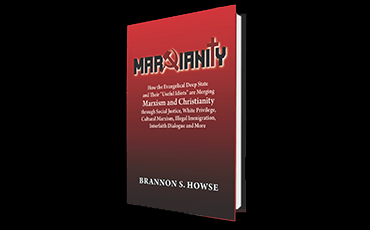With this week’s probable selection of the next Pope, I thought it would be helpful to review what theologians of the past have said about the papacy. Our age is an ecumenical one, and thus it is likely that many are ignorant of the fact that until about 50 years ago, most Protestant leaders viewed the Pope as the anti-Christ.Prior to dispensational theology (to which I largely subscribe), there was not a focus among theologians of identifying a singular antichrist. It was widely if not universally held that anyone who opposed the gospel was an antichrist. But based on the the in 1 John 2:22 and 1 John 4:3 (“the antichrist”), as well as the prophecy of “the man of lawlessness” (2 Thess 2:3), church leaders for the last 500 years have generally held that whomever the Pope was at the time, that person fills the roll of the antichrist. It was not believed that there necessarily was a once for all antichrist, as Revelation implies, but rather the focus was on the leader of those who oppose the gospel. And it would be difficult to think of a group that has opposed the gospel (salvation by faith alone in Christ alone, through grace alone) to the extent of the Catholic Church.The identification of the Pope as the antichrist was so ingrained in the Reformation era (for obvious reasons) that Luther stated it repeatedly. For example: “This teaching [of the supremacy of the pope] shows forcefully that the Pope is the very Antichrist, who has exalted himself above, and opposed himself against Christ, because he will not permit Christians to be saved without his power, which, nevertheless, is nothing, and is neither ordained nor commanded by God” (Smalcald Articles, II).This was not a new idea for Luther. Seventeen years before the Smalcald Articles (which were essentially Luther’s own personal statement of faith), he preached a midweek sermon on the subject. The gist of his sermon is captured in this quote:
“We here are of the conviction that the papacy is the seat of the true and real Antichrist…personally I declare that I owe the Pope no other obedience than that to Antichrist” (sermon on Aug 18, 1520).
After Luther was condemned by a Papal bull, he wrote, “Already I feel greater liberty in my heart; for at last I know that the pope is antichrist, and that his throne is that of Satan himself.”Melanchton, who led the Lutheran movement for four years after Luther died, carried on this theme. He wrote:
“Since it is certain that the pontiffs and the monks have forbidden marriage, it is most manifest, and true without any doubt, that the Roman Pontiff, with his whole order and kingdom, is very Antichrist. Likewise in 2 Thess. II, Paul clearly says that the man of sin will rule in the church exalting himself above the worship of God.” (Disputationes, No. 56, “On Marriage”).
In fact, the identification of the Pope as the antichrist has (until recently) been regarded as a central tenet to Lutheran theology. In 1860, for example, The Missouri Synod of the Lutheran Church rose to prominence when it split from the Iowa Synod over precisely this issue. The Iowa Synod balked at designating the Pope as the Anti-Christ, which until that point had been dogmatically asserted in Lutheran statements of faith. The Missouri Synod, in separating from the Iowa Synod, stated that “the prophecies of Antichrist have been fulfilled in the Papacy.” This split culminated in 1938, when they released this statement: “We accept [the historical position] that the Pope is the Antichrist . . . because among all the antichristian manifestations in the history of the world and the Church that lie behind us in the past there is none that fits the description given in 2 Thess 2 better than the Papacy” (American Lutheran Church Sandusky Declaration, VI).Even in 1957 the Lutheran Synodical Conference sated that the designation of the Pope as the antichrist was:
“an important article and should not be side-stepped or slighted. It is clearly revealed in the divine word, and there is nothing needless and useless in the Bible.”
The idea of the Pope as the antichrist is not unique to Protestants. In fact, for the 40 years where two rival Popes both called each other antichrist (1378-1417), John Wycliffe humorously pointed out that they were each half right. He wrote that they were “two halves of Antichrist, making up the perfect Man of Sin between them.”Zwingli, who was a Catholic priest before his conversion to Christ, often referred to the Pope as the antichrist. He wrote: “I know that in it works the might and power of the Devil, that is, of the Antichrist” (Principle Works of Zwingli, Vol. 7, p. 135).Calvin devoted an entire section of The Institutes to this topic (Book IV, “Of the Popish Mass”). In that section, at length Calvin identifies the Pope as the antichrist for no other reason than he leads the Catholic Mass. “Let my readers understand that I am here combating that opinion with which the Roman Antichrist and his prophets have imbued the whole world—viz. that the mass is a work by which the priest who offers Christ, and the others who in the oblation receive him, gain merit with God.”What is interesting in that section is that Calvin draws extensively from Augustine, who wrote (translated by Calvin into French, then into English): “It would be equivalent to Antichrist for anyone to make a bishop to be an intercessor between God and man.” There are other sections in The Institutes where Calvin simply uses the term antichrist as a synonym for pope.Knox, who was a disciple of Calvin, shared Calvin’s equation of the pope with the antichrist. He wrote that for the gospel to make headway in Europe, the people there would first have to learn to identify the Pope as “the very antichrist, and son of perdition, of whom Paul speaks” (The Zürich Letters, 199).The Lutherans were not alone in codifying the identity of the antichrist as the Pope. Both The London Confession of Faith and The Westminster Confession use identical language: “the Pope of Rome…is that antichrist, that man of sin, and son of perdition, that exalteth himself in the church against Christ, and all that is called God; whom the Lord shall destroy with the brightness of his coming” (chapter 26 of the The London Confession,and chapter 25, VI of the WC).This explains why the Puritans were almost unanimous in their equation of the Pope as the antichrist. Cotton Mather authored The Fall of Babylon, where he connected the Papacy to the antichrist as described in Revelation. He wrote that “in the Pope of Rome, all the characteristics of that Antichrist are so marvelously answered that if any who read the Scriptures do not see it, there is a marvelous blindness upon them.”A little known fact about Jonathan Edwards is that he actually wrote a church history book. Titled A History of the Work of Redemption (it is in Vol. 4 of the complete set of his works), he actually identifies the rise of the Papacy, which he places from 479-800, as “the rise of the antichrist.” Edwards describes the time period between 800 and the reformation as “the reign of the antichrist” and structures most of his outline around the theme of the gospel’s advance in relationship to the antichirst.This was not a doctrine held only by Calvinists and Lutherans. Wesley wrote a book titled Antichrist and His Ten Kingdoms, and he too saw the antichrist of Revelation and of 2 Thessalonians as the Pope. He wrote:
“He is in an emphatical sense, the Man of Sin, as he increases all manner of sin above measure. And he is, too, properly styled the Son of Perdition” (110).
On that same page he writes that the Pope “exalteth himself above all that is called God, or that is worshiped ..claiming the highest power, and highest honor…claiming the prerogatives which belong to God alone.”Spurgeon often identified the Pope as the antichrist. It was regular theme in ”The Sword and the Trowel” (eg. Jan 1866, Aug 1868) as well as in The Treasury of David (Psalms 10, 108 and 137, for example). But Spurgeon (as always) saved his most colorful language for his sermons. In this example, he was upset at the Anglican Church for looking too much like Rome:
“The Protestantism of England is the pay-master of the Pope. I am ashamed that sons of the Reformers… should bow themselves before the beast, and give so much as a single farthing to the shrine of the devil’s firstborn son. Take heed to yourselves, ye Protestants, lest ye be partakers of her plagues; touch her not, lest ye be defiled. Give a drachm to her, or a grain of incense to her censors, ye shall be partakers of her adulteries and partakers of her plagues. Every time you pass the house of Popery let a curse light upon her head: Thus saith the Lord:—‘Come out of her, my people, that ye be not partakers of her sins and that ye receive not of her plagues. For her sins have reached unto heaven, and God hath remembered her iniquities” (Sermon 250, “War, War, War”).
Charles Hodge, in his Systematic Theology (of all places) built upon Spurgeon’s quotation of Revelation 18:4 (above), and justified the connection of that passage to the Pope (cf. Vol 3, p. 817). He also referenced the prophecies in Daniel and 2 Thessalonians, and shows how the only people in history that have fulfilled them are indeed Popes.I give this long list simply to put forward a response to those that ask me if I care about who the next Pope will be. In short, I do not. And if calling the Pope the antichrist seems like a very unchristian thing to do, I assure you that it is not the theology of the thing that has changed in the last 50 years.Today’s reluctance to make that connection says a lot about how far our evangelical culture has drifted, and very little about the Pope.
Support Our Broadcast Network
Trending Stories
Latest
We're a 100% Listener Supported Network
3 Simple Ways to Support WVW Foundation
Make Monthly Donations
-or-
A One-Time Donation
-
Mail In Your Donation
Worldview Weekend Foundation
PO BOX 1690
Collierville, TN, 38027 USA -
Donate by Phone
901-825-0652


















